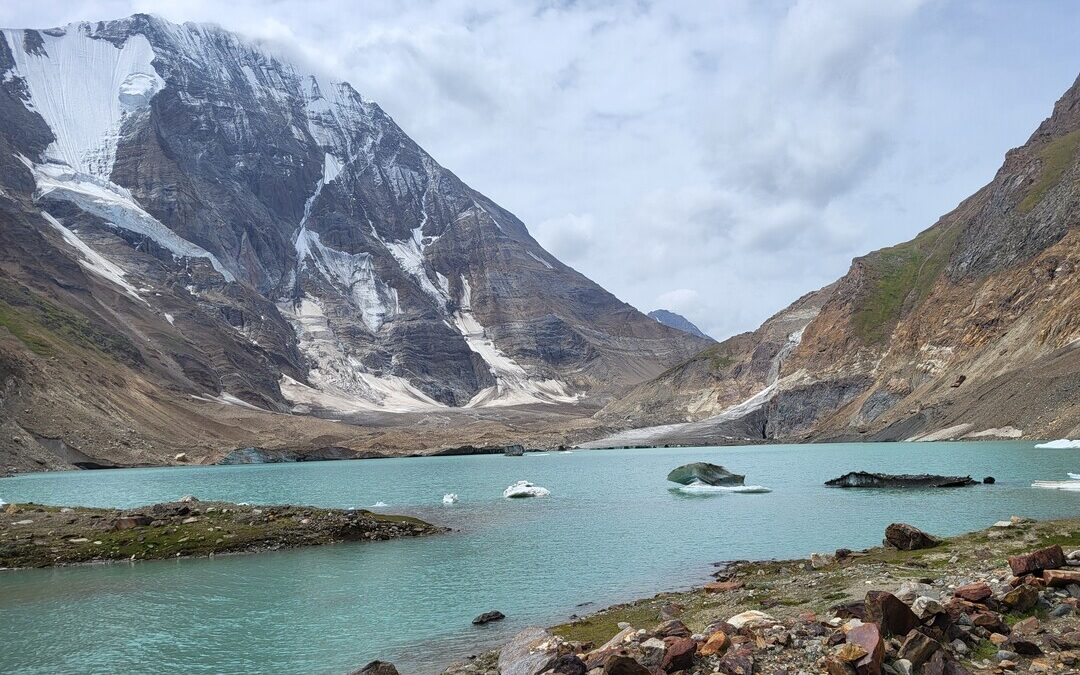India, Europe Launch Cryosphere Research Project as Himalayan Glaciers Melt
India and Europe join forces to study Himalayan glacier melt, water risks and climate-driven hazards under the new CryoSCOPE project.
Indian and European scientists have launched a joint research effort to study how climate change is reshaping glaciers, snow and water systems in the Himalayas, warning that accelerated melting poses growing risks to water security and disaster resilience.
The CryoSCOPE project, co-funded by India’s Ministry of Earth Sciences and coordinated by the Finnish Meteorological Institute, will combine advanced observation, modeling and artificial intelligence to investigate the links between snow, ice, air pollution and hydrology in the high mountains.
The project brings together four Indian institutions — IIT-Madras, IIT-Kharagpur, IIT-Roorkee and the University of Kashmir — alongside European partners.
Melting Threatens Communities
According to CryoSCOPE, glaciers in the Himalayas are melting at nearly twice the pace recorded two decades ago, threatening long-term water supplies for millions and heightening the risk of floods and landslides.
“Present-day climate models lack the capability to reliably predict how Himalayan glaciers will evolve in response to ongoing climate change,” said Chandan Sarangi, associate professor at IIT-Madras and principal investigator for the Indian consortium, in a press statement. “CryoSCOPE is addressing this critical gap by establishing a comprehensive observational network and research infrastructure across the Indian cryosphere.”
Research Focus on Ladakh Super Site
A central feature of the project is a new research hub in the Chalong catchment of Ladakh in the western Himalayas. The site will allow long-term monitoring of glacier mass balance, snowpack changes, proglacial lakes, permafrost, weather patterns and air pollution impacts on ice.
Scientists aim to assess how shifting precipitation, aerosols and local wind systems influence glacier melting. The findings will feed into improved climate models, disaster risk assessments and water management strategies.
Hazards and Water Security
The project will also study climate-driven hazards, such as glacial lake outburst floods and permafrost degradation, both of which can have devastating downstream impacts.
Improved high-resolution models will be used to simulate future water availability, with implications for drought preparedness, hydropower and agriculture.
For farmers in remote Himalayan valleys, glacier-fed streams remain the sole source of irrigation. Researchers said that both too little meltwater and sudden surges can bring hardship.
Unlike other mountain ranges, Indian glaciers are exposed to tropical warming as well as polluted air masses drifting from South Asia and China, which accelerates melting.
Global and Local Relevance
Rakesh Hooda, CryoSCOPE coordinator at the Finnish Meteorological Institute, said the project is designed to generate open-source data and tools that can inform international climate assessments and support local adaptation strategies.
“CryoSCOPE offers robust, evidence-based insights to support climate adaptation, inform IPCC assessments, and promote the UN Sustainable Development Goals,” Hooda said in a statement.
The initiative coincides with the United Nations’ International Year of Glaciers’ Preservation and the Decade of Action for Cryospheric Sciences running from 2025 to 2034.
Also Read:
India Advances Glacier Monitoring, Water Data for Climate Resilience
Nirmal Menon
Related posts

Subscribe
Error: Contact form not found.


